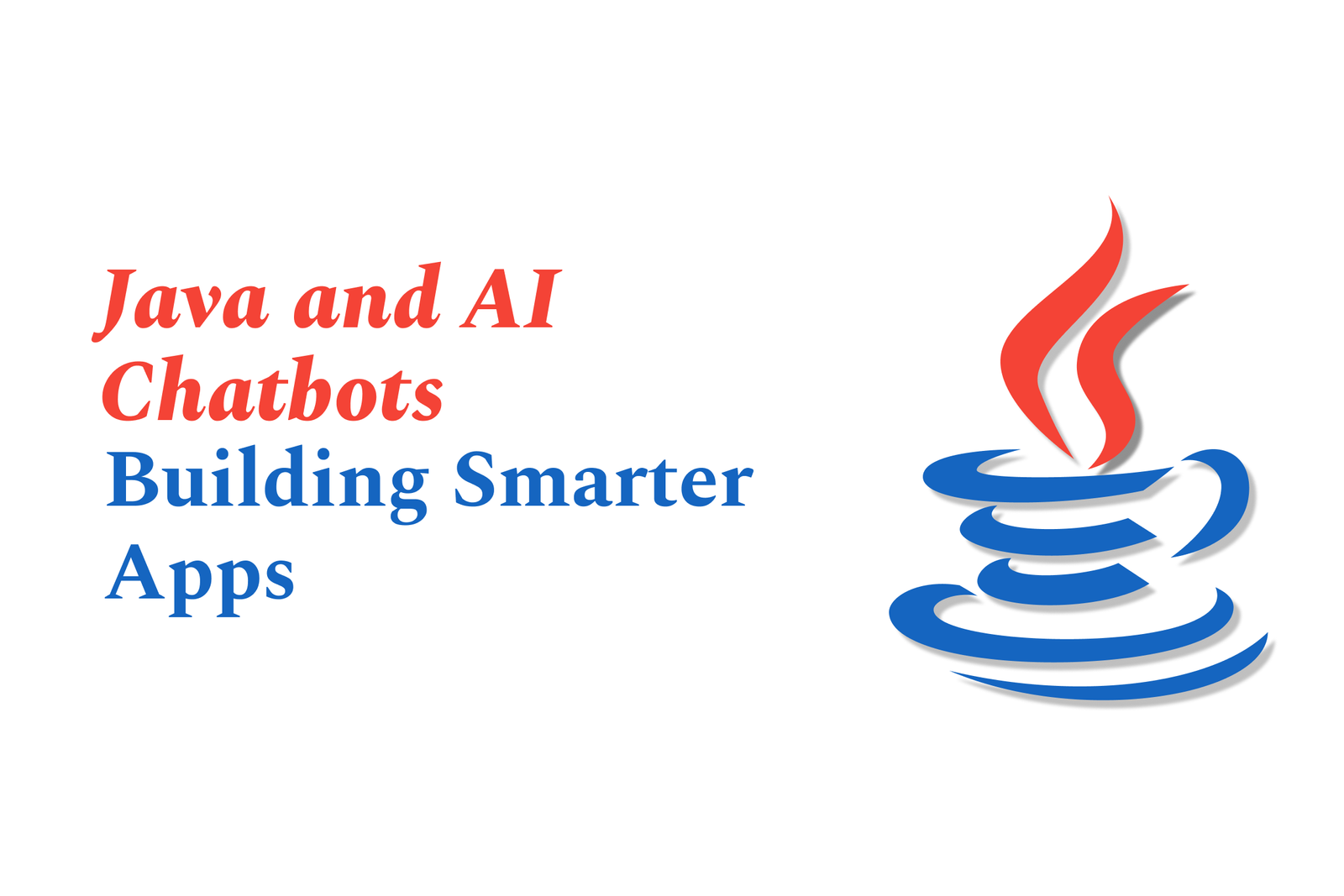Java and AI Chatbots: Building Smarter Apps
Java powers AI chatbots by combining robust, scalable development with advanced language models like GPT. This fusion enables smarter apps that deliver natural, personalized interactions across industries, enhancing user experience and automating complex tasks efficiently.
Java and AI Chatbots: Building Smarter Apps
1 ) Introduction to Java in Modern Development
Java remains one of the most powerful and widely used programming languages, enabling innovation from student projects to large scale enterprise applications.
It supports extensive developer resources, community platforms, and a robust ecosystem including multiple Long Term Support (LTS) versions like Java SE 21 )
2 ) Capabilities of Java for AI Development
Java provides essential tools and libraries that facilitate AI and machine learning application development, including for chatbots.
Modern Java versions and frameworks support integration with AI services, enabling developers to build scalable, maintainable AI driven applications.
3 ) Role of AI Chatbots
AI chatbots powered by advanced language models (e.g., GPT 4 via OpenAI APIs) are revolutionizing user engagement, offering natural language understanding, personalized interactions, and automated support.
In healthcare and other industries, AI chatbots improve customer experience by delivering contextual responses, mental health support, administrative automation, and continuous wellness monitoring.
4 ) Integration of Java with AI Technologies
Java applications can integrate AI capabilities by leveraging APIs, embeddings, and function calling.
Developers can build context aware agents that incorporate patient history or user data for personalized assistance.
Java’s architecture supports building HIPAA aligned and secure AI chatbot applications by deploying APIs with encryption within healthcare compliance frameworks.
5 ) Advantages of Using Java for AI Chatbots
Strong typing and mature tooling in Java help ensure reliability and maintainability in AI applications.
Java’s extensive ecosystem supports diverse deployment options—from embedded devices to cloud infrastructure, facilitating flexible AI chatbot implementations.
The extensive community and continuous improvements keep Java relevant for cutting edge AI and chatbot development.
6 ) Challenges and Perspectives
While Java is accessible and less complex as a language, it may not always serve as a tool to discriminate programming expertise, given its ease of use compared to lower level languages.
However, this simplicity can be a strength, allowing developers to focus on AI logic and integration rather than language intricacies.
7 ) Conclusion
Java remains a foundational language for building smart AI chatbots capable of natural language interactions and advanced contextual understanding.
Combining Java’s stability and large ecosystem with AI models like those provided by OpenAI delivers smarter, scalable apps that can meet evolving user and industry demands.
https://justacademy.in/news-detail/react-native-in-2025:-what-developers-are-excited-about
https://justacademy.in/news-detail/android-auto-updates-and-new-features
https://justacademy.in/news-detail/react-native-now-powers-desktop-apps
https://justacademy.in/news-detail/android-developer-preview-releases
https://justacademy.in/news-detail/react-native-expo-bare-workflow:-what-you-should-know
Related Posts
In 2025, top Angular libraries offer modern, feature-rich components and tools for building dynamic web apps. From powerful data grids to low-code platforms like UI Bakery, these libraries enhance development speed, UI design, and scalability, making them essential for Angular developers.
Migrating from AngularJS to Angular 17 involves gradually upgrading your app by running both frameworks together using tools like ngUpgrade, rewriting components in TypeScript, and adopting Angular’s modern architecture to enhance performance, maintainability, and long-term support.
Angular state management tools help organize and handle app data efficiently, improving scalability and maintainability. Popular options include NgRx for robust, RxJS-based patterns, and newer Signal Store solutions that offer simpler, reactive approaches integrated tightly with Angular’s latest features.
RxJS in Angular empowers developers to manage asynchronous data streams with powerful operators like `forkJoin`, `combineLatest`, and `zip`. Mastering these key operators in 2025 is essential for building efficient, reactive applications that handle complex event sequences seamlessly.
Angular performance optimization in 2025 focuses on improving app speed and responsiveness by using techniques like OnPush change detection, lazy loading, efficient data caching, and AOT compilation. These practices reduce load times, enhance user experience, and ensure scalable, fast Angular applications.
In 2025, Angular remains preferred for large-scale, enterprise apps with its robust, all-in-one framework, while Vue attracts developers seeking simplicity and fast development for smaller projects. Both frameworks excel, with choice driven by project needs and team expertise.
Angular Signals are a new reactive primitive in Angular 16 that enable fine-grained, efficient change detection by automatically tracking dependencies and updating only affected parts of the UI. They simplify state management and boost app performance, revolutionizing Angular's reactivity model.
Angular interview questions to prepare in 2025 focus on core concepts like components, directives, data binding, routing, and dependency injection, along with TypeScript mastery and latest Angular features to ensure strong practical knowledge for building scalable, efficient web applications.
AngularJS reached its official end of support in January 2022, meaning no further updates or security patches. To ensure app security and performance, developers should consider migrating to modern Angular versions or seek third-party long-term support options if immediate migration isn’t possible.
The Angular Roadmap 2025 highlights upcoming features focused on improving developer experience and performance, including zoneless Angular, Signals integration, enhanced Forms, async data handling, improved HMR, and expanded Angular Material/CDK enhancements, driving modern, efficient web app development.










